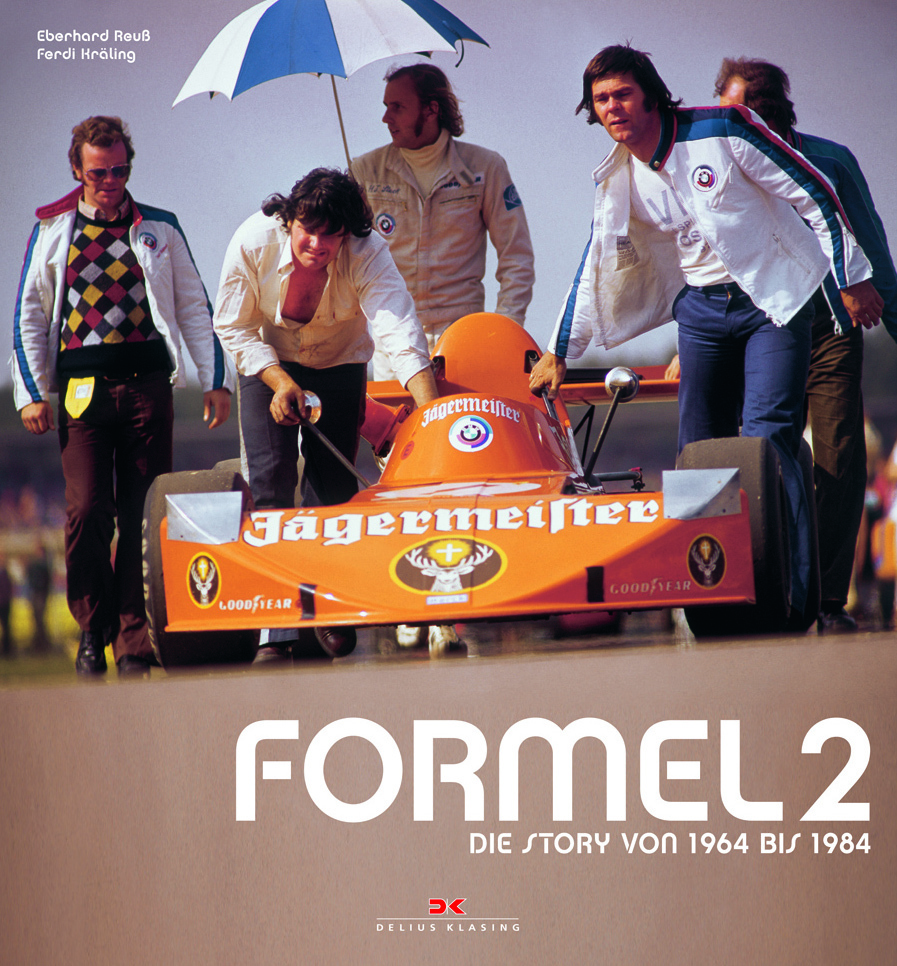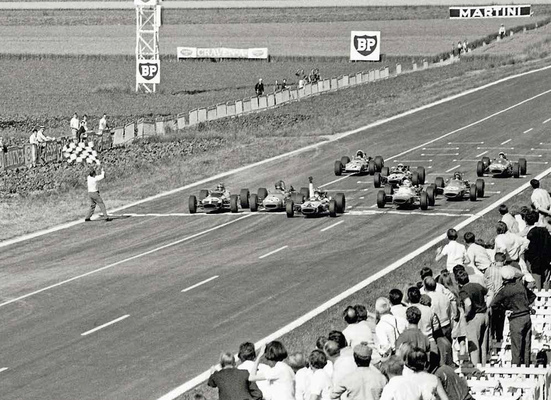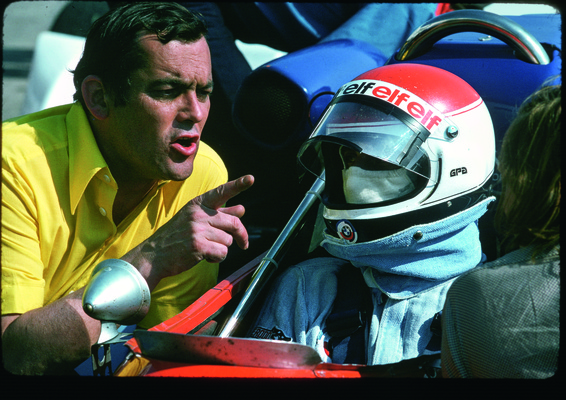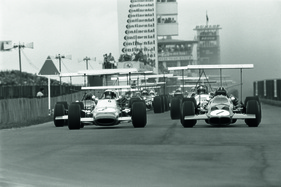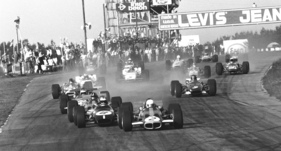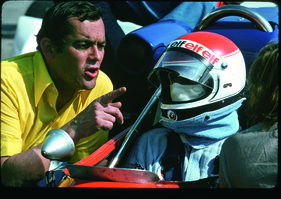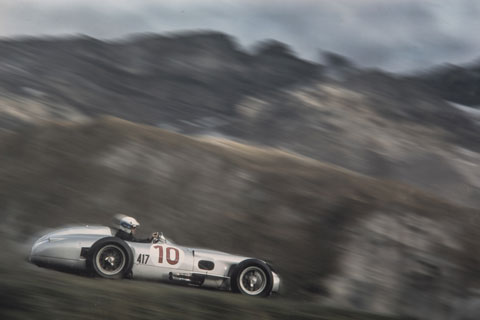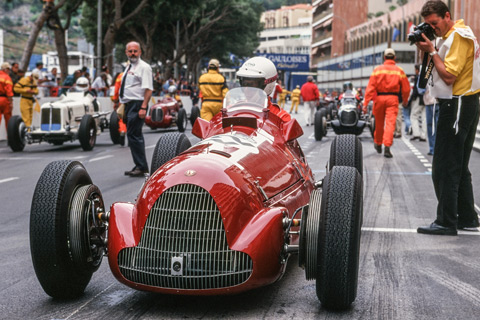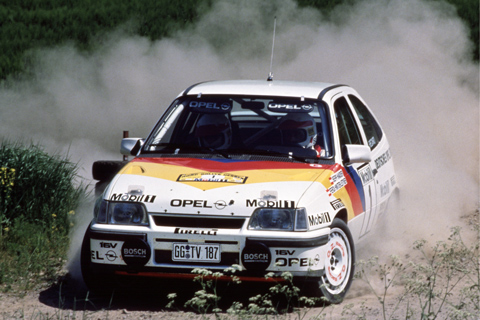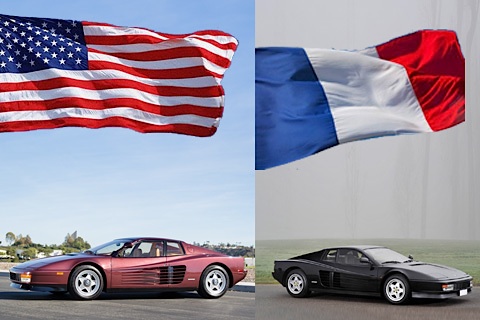A formula with a past
The desire for a small formula below the respective top class has existed in motor racing from the very beginning. As early as 1895, Léon Bollée named his cycle car "Voiturette" and had this name protected under trademark law. It didn't help. The term quickly became commonplace for the light class and was also used officially.
The formule libre was introduced in 1928. Later the 750kg. Formula, etc. The old Grand Prix formula from 1926-27 with a displacement limit of 1.5 liters with a supercharger continued to exist as the Voiturette formula. It was a stomping ground for private and up-and-coming drivers alike, mostly in Bugatti cars. The races were often held as pre-races to the Grand Prix. For example, the 1934-1939 Bern Grand Prix preceded the Swiss Grand Prix on the Bremgartenring. Before the Second World War, Maserati and ERA in particular made a name for themselves as suppliers of cars.
After the Second World War, i.e. from 1948, the Formula Voiturette became Formula 2, as a step down from the newly created Formula 1. It was stipulated as a 2-liter formula without a supercharger (and 500cc with a supercharger) because the BMW 328 engine was available in Germany and England (built by Bristol) and in Italy from Maserati and Ferrari. The field was again made up of young and private drivers. Many of them built their own cars. Formula racing was basically open to everyone, while Formula 1 always remained an exclusive, relatively expensive sport dominated by works cars.
After the Second World War, the 500cc class in England and Formula Junior in Italy were created as actual junior formulas, which later led to Formula 3, which was reserved for junior drivers only.
The technical foundations
The introduction of the 1,500cc formula in Formula 1 in 1961 actually cannibalized Formula 2, which had been in existence since 1959. The desire to establish a fundamentally affordable, international formula between the exclusive Formula 1 and Formula 3, which was reserved for young drivers, led to the revival of Formula 2 in 1964.
It was an immediate success. With changing regulations, it remained in existence until 1984 before being replaced by Formula 3000 in 1985:
| Time range | Regulations Description |
|---|---|
| 1964-1966: | Displacement: max. 1,000cc; racing engines with a maximum of 4 cylinders; minimum weight: 420kg (without fuel). |
| 1967-1971: | Displacement: 1,300-1,600cc; engine block with a maximum of 6 cylinders from a production car of which at least 500 units have been produced within 12 months; minimum weight: 420kg (without fuel). |
| 1972-1975: | Displacement: max. 2,000cc; engine block with a maximum of 6 cylinders from a production car of which at least 1,000 units (from 1973: 100 units) have been produced within 12 months; minimum weight: 450kg for 4 cylinders/475kg for 6 cylinders (without fuel). |
| 1976-1984: | Displacement: max. 2,000cc; racing engines with a maximum of 6 cylinders; minimum weight: 500kg (without fuel). |
2nd league or promotion of young talent
Formula 2 races were usually held at international level, so that so-called graded drivers (A drivers) were permitted. This classification was based on results in international races, i.e. primarily Formula 1 and sports cars. A drivers were typically the works drivers in Formula 1, but the classification was effectively more complicated. The list of these drivers was officially published by the FIA before each season.
The Formula 1 teams and their drivers gratefully accepted this offer, as there was entry money to be earned. At a time when the maximum number of world championship races was twelve and most of them were held in Europe anyway, there were plenty of free weekends and the logistics were relatively easy to manage with a van. As a result, Formula 2 became an exciting competition between the top international drivers and young talent. Among them were also private drivers who found a real challenge here.
It was a spectacular B-League. Ferdi Kräling explains: "Of course, Formula 2 was also about entry and prize money. And even with 220 hp behind the wheel, the fun was still risky enough. But it was still first and foremost fun for everyone. And Formula 2 was much more relaxed in this respect. As a photographer, you were simply closer to the people and their emotions.
The following picture shows Jackie Stewart as a budding world champion wheel to wheel in a horde of more or less young colleagues sprinting to the finish in Rheims. The other A drivers such as Jochen Rindt, Graham Hill, Jacky Ickx and Joseph Siffert had to pay tribute to the pace.
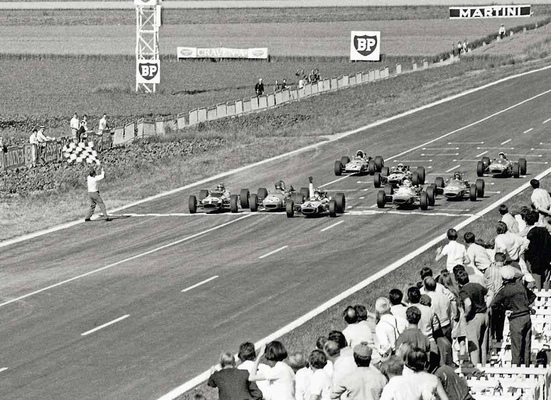
Formula Rindt?
From 1964 to 1970, Formula 2 was dominated by Jochen Rindt. Of a total of 130 races in this period, he won 28, i.e. around 20 percent. In 1964, it was a sensation when he beat Graham Hill for the first time in a direct duel at Crystal Palace in England of all places. Later, when he was already a works driver and had to wait a long time, until 1969, for his first Grand Prix victory, it was confirmation of his talent and racing instinct.
It is also interesting to note that Jochen Rindt, Jack Brabham, Jim Clark and Jackie Stewart together won 66 Formula 2 races between 1964 and 1970, i.e. more than half of them. Added to this are Graham Hill (2 wins), John Surtees (3) and Denis Hulme (5), who as world champions also achieved victories in this first phase of Formula 2.
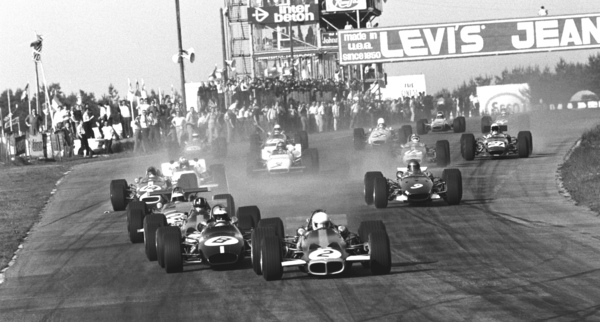
The Swiss are on board
From 1967, the Formula 2 European Championship was introduced, in which only drivers who were not listed as A drivers received points. It is noteworthy that two Swiss drivers, Clay Regazzoni and Marc Surer, were among the title winners:
| 1967 | Jacky Ickx | Matra MS5-Cosworth FVA | Tyrrell Racing Organization |
| 1968 | Jean-Pierre Beltoise | Matra MS7-Cosworth FVA | Matra Sports |
| 1969 | Johnny Servoz-Gavin | Matra MS7-Cosworth FVA | Matra International |
| 1970 | Gian-Claudio (Clay) Regazzoni | Tecno 69/70-Cosworth FVA | Tecno Racing Team |
| 1971 | Ronnie Peterson | March 712M-Cosworth FVA | March Engineering |
| 1972 | Mike Hailwood | Surtees TS10-Cosworth BDA (Hart) | Team Surtees |
| 1973 | Jean-Pierre Jarier | March 732-BMW M12/6 | March Racing Team |
| 1974 | Patrick Depailler | March 742-BMW M12/6 | March Racing Team |
| 1975 | Jacques Lafitte | Mk. 16-BMW M12/6 (Schnitzer) | Écurie Elf |
| 1976 | Jean-Pierre Jabouille | ELF2J-Renault-Gordini CH1B | Équipe Elf |
| 1977 | René Arnoux | Martini Mk. 22-Renault-Gordini CH1B | Écurie Renault Elf |
| 1978 | Bruno Giacomelli | March 782-BMW M12/7 | March Racing |
| 1979 | Marc Surer | March 792-BMW M12/7 | BMW Junior Team |
| 1980 | Brian Henton | Toleman TG280-Hart 420R | Toleman Group Motorsport |
| 1981 | Geoff Lees | Ralt RH6/81-Honda RA261E | Ralt Racing |
| 1982 | Corrado Fabi | March 822-BMW M12/7 | March Racing |
| 1983 | Jonathan Palmer | Ralt RH6/83H-Honda RA261E | Ralt Racing |
| 1984 | Mike Thackwell | Ralt RH6-Honda RA261E | Ralt Racing |
There are no world champions among the European champions. However, Niki Lauda, James Hunt and Keke Rosberg learned in Formula 2.
The series was more than just a stepping stone for drivers. It was just as important as an introduction for new engine suppliers. For Cosworth, BMW and Gordini (Renault), the experience gained in Formula 2 was decisive for their entry into Formula 1. Berni Ecclestone, Max Mosley, Frank Williams, Ron Dennis, Rory Byrne and Adrian Newey also spent their apprenticeship years in Formula 2. However, things didn't quite work out for the brands: Matra, Tecno, March, Martini, Chevron etc. didn't really manage to establish themselves in Formula 1. Toleman, Spirit, Minardi so-so or after various metamorphoses.
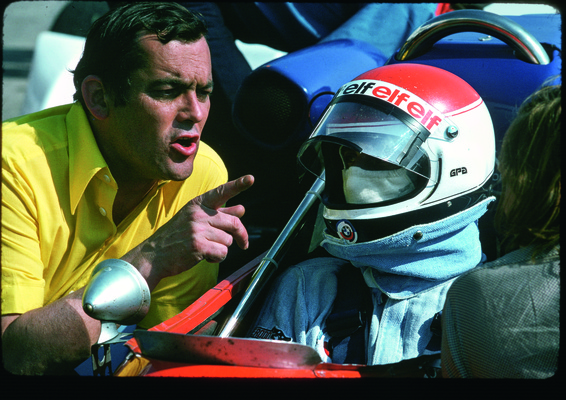
Turning point
The wheel began to turn from around 1970. Sponsors replaced entry fees as the main source of funding for Formula 1 teams. In addition, the number of world championship races increased and with it the involvement outside Europe.
The presence of works drivers from Formula 1 teams in Formula 2 races gradually declined. It became a junior formula. At the same time, there was also a certain loss of importance. The European champions after 1977 all made it into Formula 1 (at least briefly), but not a single one recorded a victory in a Grand Prix. Nelson Piquet, Alain Prost and Ayrton Senna raced straight from Formula 3 to Formula 1.
Formula 2 also became more and more technically sophisticated in the wake of Formula 1. Wing cars were introduced and costs rose steadily.
Ralt secured an exclusive contract with Honda and this combination proved to be increasingly unbeatable from 1980 onwards. However, nobody else wanted to go to the expense of Honda. The decision to solve the engine problem with the Ford-Cosworth DFV, which was hardly used in Formula 1 any more but was available on a massive scale, was only logical. Formula 3000 was born.
Formula 2 by Ferdi Kräling and Eberhard Reuss
The Kräling/Reuss duo tell the story of this Formula 2 in a very personal way. It was a time when photographers were able to get up close and personal with the drivers both in the paddock and on the track. It is an almost endless collection of anecdotes about drivers, team bosses and parvenus. The text is not crammed with technical details. Nevertheless, it makes a point of making the connections clear. The basic tenor always remains the same: "It was fun".
There is no comparable history of Formula 2 1964-1984, only dry collections of race results and comprehensive websites. They are also quoted by Reuss/Kräling and can therefore be consulted as a supplement.
It is actually a photo book. "As a photographer, you were simply closer to the people and their emotions," said Ferdi Kräling in the quote above. And that's exactly how the pictures are. A very personal and at the same time very committed view of things. Racing scenes, pictures from the pits, portraits of individuals and groups of people in an engaged discussion or simply at a loss. Everything is available.
A small drop of bitterness for us Swiss is the fact that our two F2 European champions Regazzoni and Surer are somewhat underrepresented.
Death rides along
Reuss and Kräling report bluntly on the fatal accidents that occurred during this period, even going beyond Formula 2. The highlight is the full-page picture of the smashed monocoque of Jim Clark's Lotus 48 after the fatal accident at the Hockenheimring on April 7, 1968.
Formula 2 was no more dangerous than Formula 1, but racing as a whole was dangerous back then. Chris Amon is quoted as reacting to the death of Jim Clark with the following (often repeated) sentence: "We all thought the same thing: If even Jimmy can get it, what chance do we have?" However, this did not prevent him and his colleagues from contesting the second race on the same day.
Richard von Frankenberg provided an explanation for this behavior in 1959 (in Schachspiel ohne Bedenkzeit, pages 65-66): "From the first attempt, those who are drawn to motor racing are overcome by a feeling that is not as strong in any other sport, [...] the mysterious, continuous transition into another world. [...]. The fascination that emanates from crossing over into this separate, different and new world is probably the strongest impulse behind the whole complex of "car racing", which is never fully realized and therefore never fully explained. In this other world, the same new and different standards apply [...]: only the lap time counts [...]. The yardstick is Fangio, Moss, Hawthorn, Behra, Brooks; the rest of the world has disappeared, because we have created our own [...]".
In the age of television broadcasts and dependence on sponsors, such a separate world of motor racing, which owes justification only to itself, is hardly conceivable. Today's motor racing must be able to face up to the general public. It wasn't back then. The issue of safety was not high on the agenda. Nevertheless, after the death of Jim Clark, a phase began where the topic was actively addressed and measures were taken: Guard rails, seat belts, fireproof underwear, full-face helmets were introduced. However, there is no mention of this in the book. This can be justified by the fact that these measures hardly reduced the number of fatal accidents. The transition to the consistent implementation of passive safety measures in cars only came with the death of Ayrton Senna in 1994.
Nevertheless:
This reference does not detract from the quality of the book. It is the report of insiders. It is their view of the scene at the time.
The following motto is printed on the back of the book: "It is time [...] to refresh the memory of this second league of racing. For those who were there. And even more so for those who only knew about it from hearsay or not at all". The two authors have laid an excellent foundation for this. A book worth recommending.
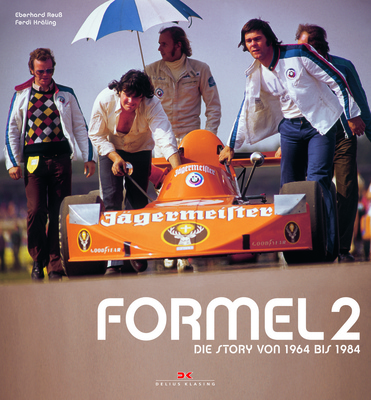
Bibliographic information
Title: Formula 2: The Story from 1964 to 1984
Authors: Eberhard Reuss, Ferdi Krähling
Language: German
Length: 208 pages
Publisher: Delius Klasing, 2014
ISBN/EAN 978-3-7688-3865-8
Size: 277x296mm
Price: CHF 53.90 (incl. VAT, excluding postage and packing)
Order: From the publisher or at amazon.de
